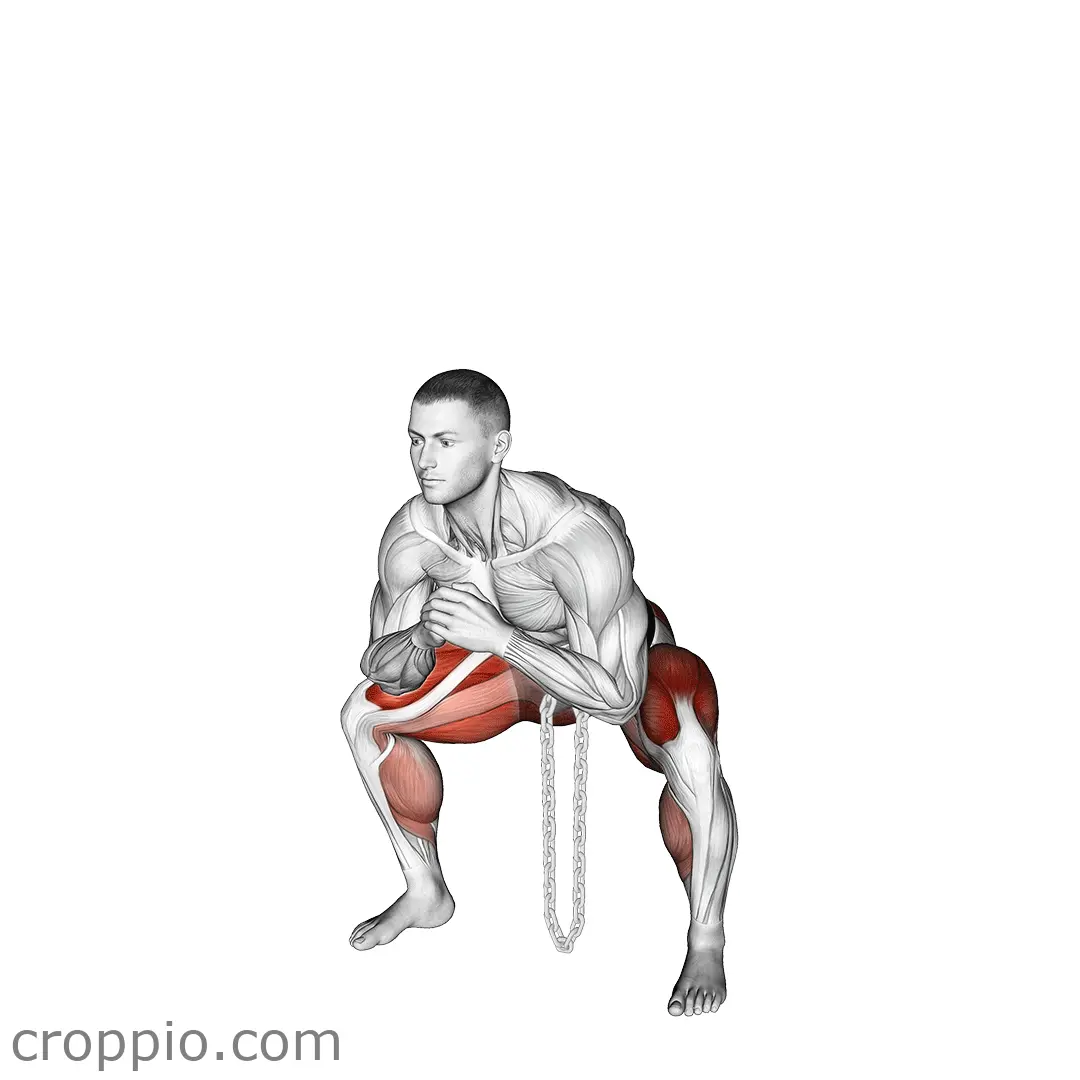Heel Elevated Goblet Squat

Muscles Involved
The heel elevated goblet squat primarily targets the quadriceps, glutes, and hamstrings. Elevating the heels shifts the emphasis to the quadriceps, allowing for a greater range of motion and enhancing knee flexion. Additionally, the exercise activates the glutes as they engage to stabilize the pelvis during the squat. Secondary muscles involved include the calves, core, and lower back, which work to maintain stability and proper posture throughout the movement.
Top Mistakes
- Not maintaining an upright torso, which can lead to unnecessary strain on the lower back.
- Allowing the knees to collapse inward rather than tracking over the toes, increasing the risk of injury.
- Insufficient depth in the squat, which reduces the effectiveness of the exercise.
- Rushing the movement and sacrificing form for speed, leading to potential injuries.
Execution Tips
- Stand with feet shoulder-width apart and place a weight, like a dumbbell or kettlebell, close to your chest, holding it with both hands.
- Elevate your heels on a small platform, such as a weight plate or wedge, ensuring your feet are flat on the ground and stable.
- Maintain an upright torso by keeping your chest up and shoulders back throughout the movement.
- Add tension in your core to stabilize your spine as you lower into the squat.
- Lower your body by bending at the hips and knees, ensuring your knees follow the line of your toes.
- Squat down until your thighs are parallel to the ground or lower, if comfortable, before pressing through your heels to return to the starting position.
Workouts
The heel elevated goblet squat can be incorporated into a full-body workout routine. Aim for 3-4 sets of 8-12 reps, adjusting the weight to ensure proper form is maintained throughout the sets. For a well-rounded leg day, pair this exercise with complementary movements such as lunges, leg presses, and calf raises to target all major leg muscles. Additionally, consider including core exercises like planks or Russian twists to enhance core stability and strength, which is beneficial for squatting.
Conclusion
The heel elevated goblet squat is an excellent exercise for building lower body strength and improving overall squat mechanics. By elevating the heels and focusing on depth, this variation encourages better form and muscle engagement, particularly of the quadriceps and glutes. Regularly integrating this exercise into your workout regimen can enhance your squat performance, improve mobility, and create a solid foundation for other physical activities.



